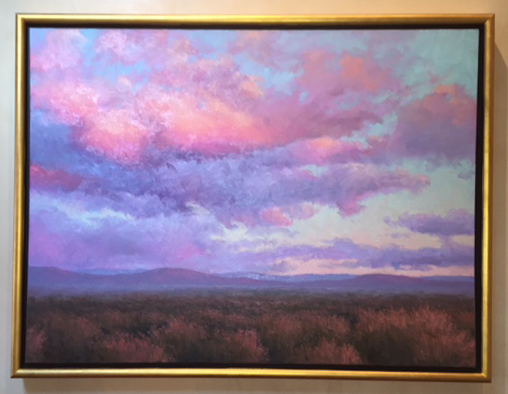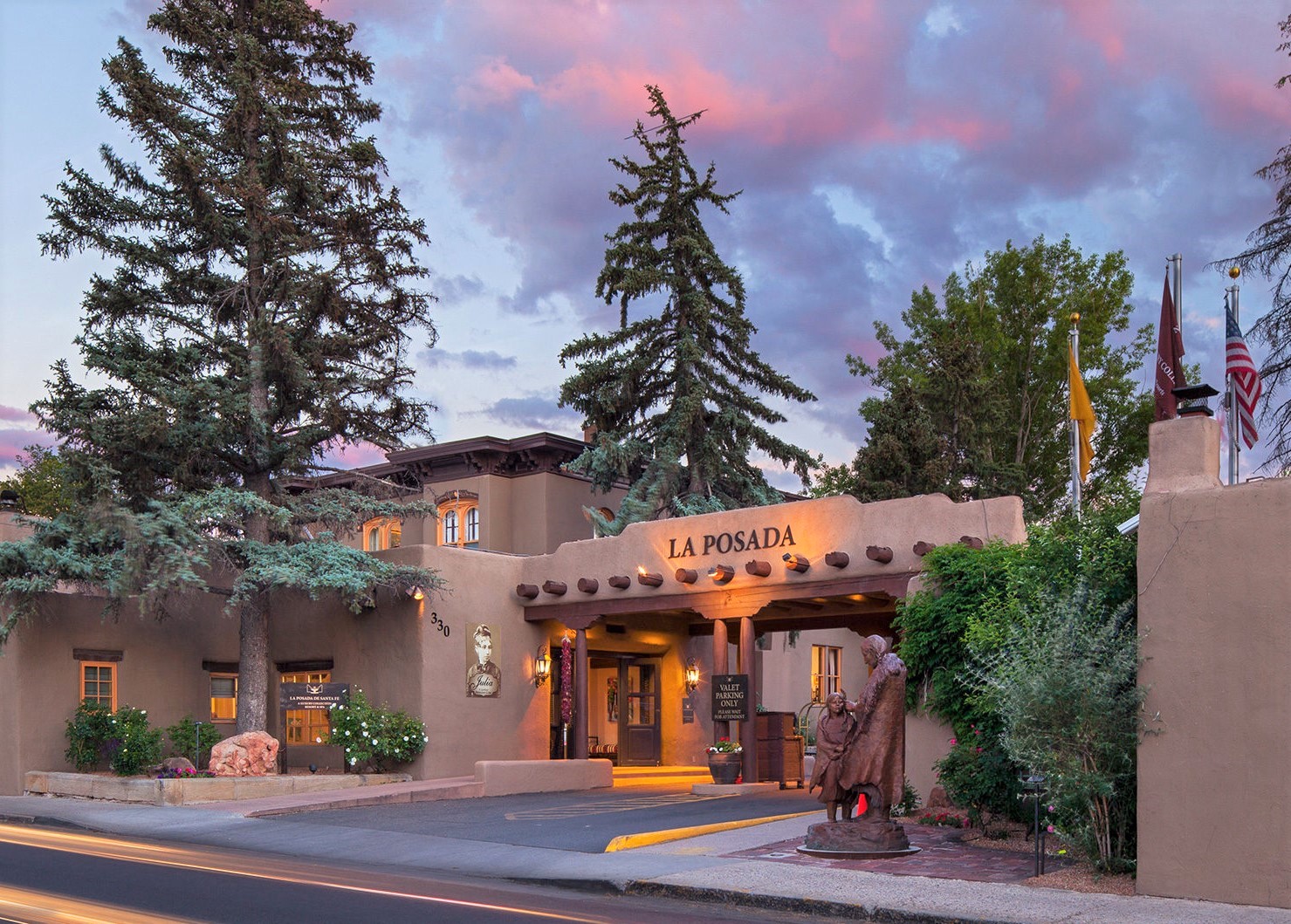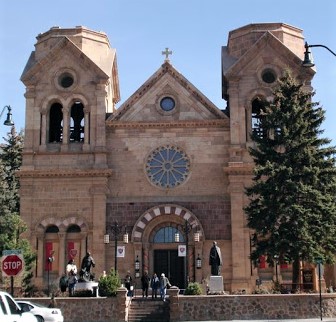
Santa Fe is one of the world’s outstanding tourism destinations. I could rhapsodize about the views, the climate and its culture; and I have, in previous columns. On my most recent visit, however, I noticed one aspect of Santa Fe that’s not been adequately reported.
Santa Fe’s welcoming of outsiders is remarkable. Consider, for example, the painting at the top of this story, Twilight Time by the prestigious Don Ward. This 48-inch oil painting — a typical view of the nearby hills — was acquired by Sara Eyestone, the art curator at The Art Hotel of New Mexico, La Posada de Santa Fe.
Her family originally came to Santa Fe when her father was recruited to work on the atomic bomb project at nearby Los Alamos. The painter, Ward, worked in advertising in Los Angeles before he decided to pursue the life of an artist in New Mexico. Eyestone is an artist herself, and is expanding La Posada’s incredible art collection and creating a docent program for guests. This hotel has a painting school that dates back to the 1930’s when accomplished artists painted on the grounds and taught hotel guests and New Mexican residents.
Ward and Eyestone are just two examples of outsiders who came and contributed immensely to Santa Fe’s culture.
La Posada has an elegant restaurant called Julia, named for the 19th-century  socialite Julia Staab. She and her husband were Jewish immigrants from Germany, which spotlights the fact that Santa Fe has had close relationships among its varied ethnicities. Native Americans mixed with Spanish families, Europeans and Anglos with Latin Americans, and intermarriages have been common for many generations. The diversity in cultures has led to Santa Fe’s exceptional creativity in cuisine and in the arts.
socialite Julia Staab. She and her husband were Jewish immigrants from Germany, which spotlights the fact that Santa Fe has had close relationships among its varied ethnicities. Native Americans mixed with Spanish families, Europeans and Anglos with Latin Americans, and intermarriages have been common for many generations. The diversity in cultures has led to Santa Fe’s exceptional creativity in cuisine and in the arts.
Another transplant to Santa Fe became one of the most influential figures in the Catholic church and in government. Nicolas Ortiz was a native of Mexico City who trekked to Santa Fe on foot in 1664 with his wife and children. He became wealthy, and sired a family that was powerful in the governance of New Mexico before it became part of the United States. Surprisingly, the Ortiz coat of arms features a six-pointed star in its center because the family had Jewish ancestors.
The Hilton Santa Fe Historic Plaza, where I stayed on my recent trip, is a modern hotel built around the 300-year-old hacienda of the Ortiz family. My wife and I lodged in a guesthouse (casita) which originally was part of the Ortiz complex. It features a kiva fireplace, kitchen and a whirlpool bathtub – perfect for a special stay.
Fiona Wong is a more recent example of an emigre who has made a mark in Santa Fe. With her partner Soma Franks, Wong runs a local landmark, the Sweetwater Harvest Kitchen. They have a stone mill which grinds the restaurant’s own organic flours from buckwheat and whole-grain spelt. Vietnamese and Japanese dishes merge with New Mexican on the menu.
The most prominent building on the skyline of Santa Fe is the yellow limestone Saint Francis Cathedral. It was the life’s work of the French-born Jean Baptiste Lamy, New Mexico’s first bishop. As he raised money  for the building, my wife’s ancestor Charles Ilfeld, a Jewish merchant, made a substantial contribution and Lamy showed his appreciation by including the Hebrew letters of the name of God in the keystone of the cathedral’s main arch.
for the building, my wife’s ancestor Charles Ilfeld, a Jewish merchant, made a substantial contribution and Lamy showed his appreciation by including the Hebrew letters of the name of God in the keystone of the cathedral’s main arch.
One block away is the city’s main square, or plaza, flanked by the original state capitol building and a fine history museum. Moving out from that central point we find many other alluring sites. One of the most interesting is Meow Wolf House with its interactive futuristic art experience (www.meowwolf.com).
You can taste the foods that shape the city on the Sip & Savor walking tour led by Joe Griffith (joe@wandernm.com) who introduces you to chefs and owners with mole and mezcal tasting at Sazon, cheese tasting at Cheesemonger’s of Santa Fe, and wines at Gruet Tasting Room and at Noisy Water Winery. You may attend classes in the preparation of traditional New Mexican cuisine at the Santa Fe School of Cooking on Guadalupe Street.
In one respect, Santa Fe reminds me of Salzburg — with its high-class sophistication — because restaurant waiters ask if you have opera tickets, so they can make sure you finish your meal in time, but Salzburg is more exclusively focused on music while Santa Fe has more diverse attractions. It is America’s third largest market for paintings, surpassed only by New York and Los Angeles.
Therefore your visit should include a Friday evening, when all the art galleries host parties which are open to the public; and if you come in the summer you should drive twenty minutes north of town to the gorgeous Santa Fe Opera which has creative productions on its stage and, on all sides, fabulous views of the New Mexican mountains.
For an earlier story about Santa Fe, click here.